Types of clay
Clay comes in many varieties with different properties. Different clays have different uses.Т Some clay is strong and durableLong-lasting. Able to withstand wear and damage., making it ideal for large-scale or outdoor use. Other types are chosen for their colour, texture or flexibility.
Popular types of clay include earthenware, stoneware and porcelain.
Earthenware
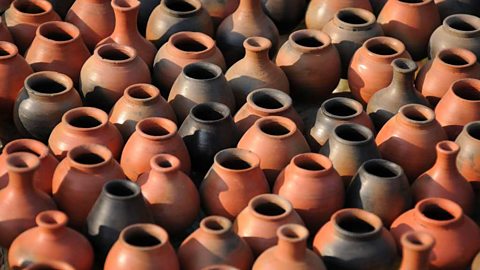
Earthenware clays are the most commonly used clays because they fire at low temperatures. They are highly plasticityThe degree to which something is soft and easily shaped..
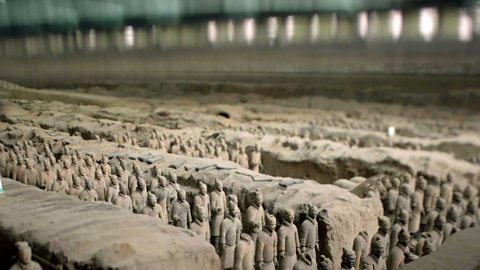
Terracotta is another earthenware clay. It contains iron which makes it reddish-brown.
Unglazed earthenware is porousSomething that allows water to pass through it.. It is used for bricks, tiles and plant pots. Unless it is glazed, it is not suitable for holding liquids.
Stoneware
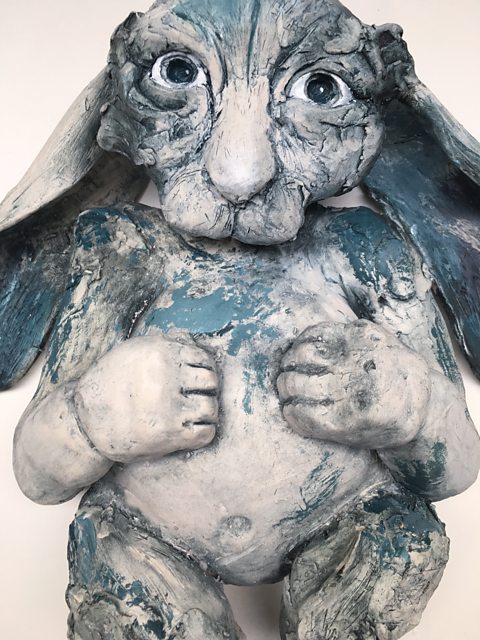
Stoneware clay is malleableCan be easily made into different shapes. and often grey. Firing it in different ways will change the final colour.
It is tough and is excellent for making dinnerware because it can be heated in a normal oven many times without breaking. It is non-porousNot letting water or air through. and waterproof.
Porcelain
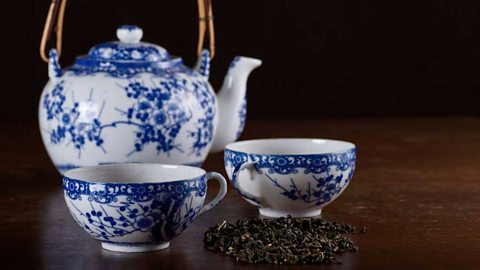
Porcelain is smooth and versatile. It is used for functional objects, decorative items and sculptures. It has a white, translucentAllows light to pass through but is not completely clear. finish. This plain, uncoloured surface makes it ideal for vibrant glaze work.
Paper clay
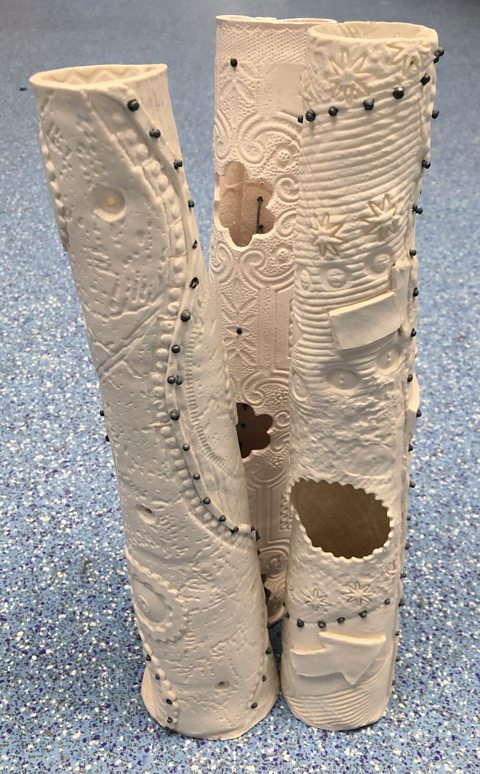
Paper clay is a mix of clay, paper pulp and water. When fired, the paper pulp burns away giving a thin and light yet strong finish.
Paper clay in the greenwareClay that has fully dried and is ready to be fired in a kiln. state is strong and versatile. At this stage, the dry clay can have more wet clay attached to it, creating many layers. This allows more freedom than other clays.